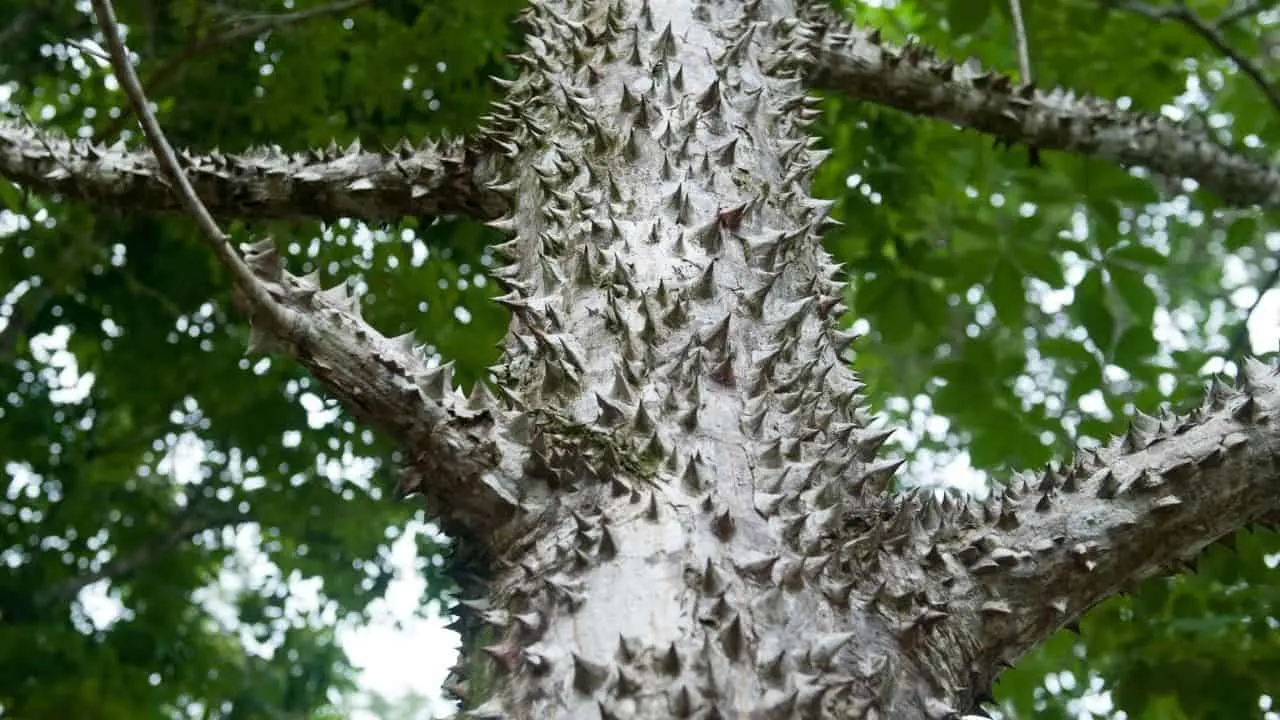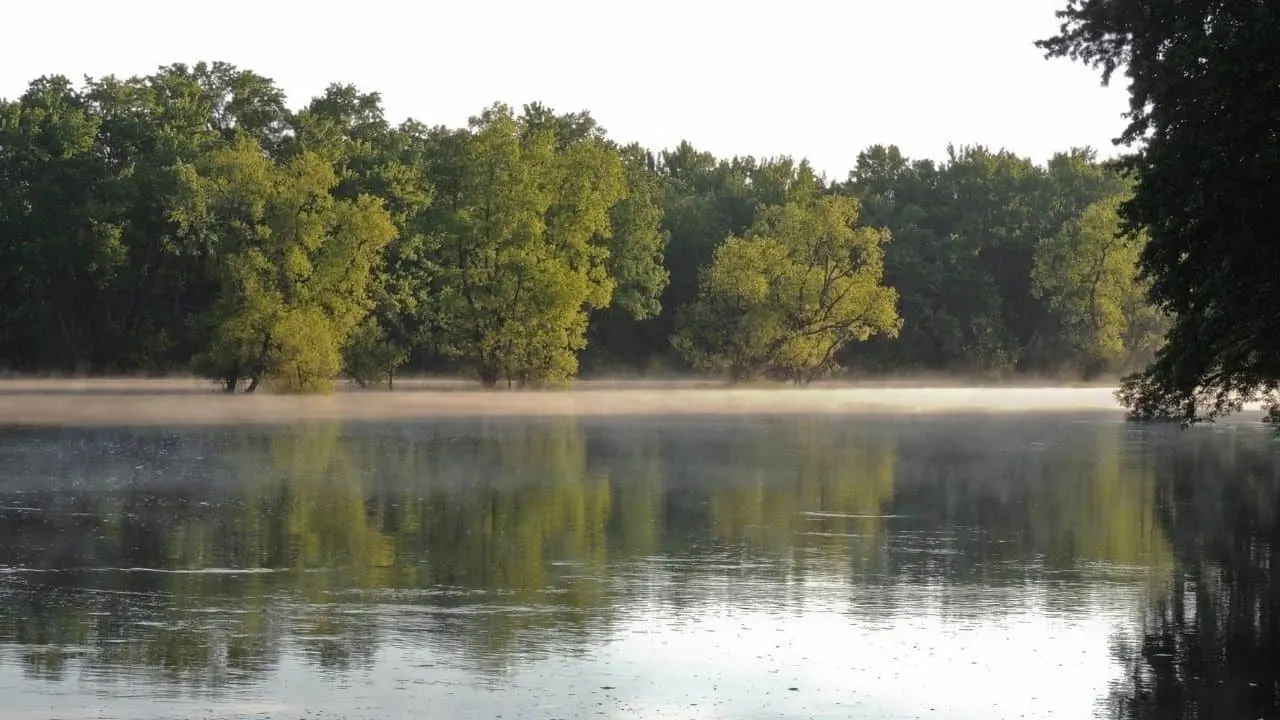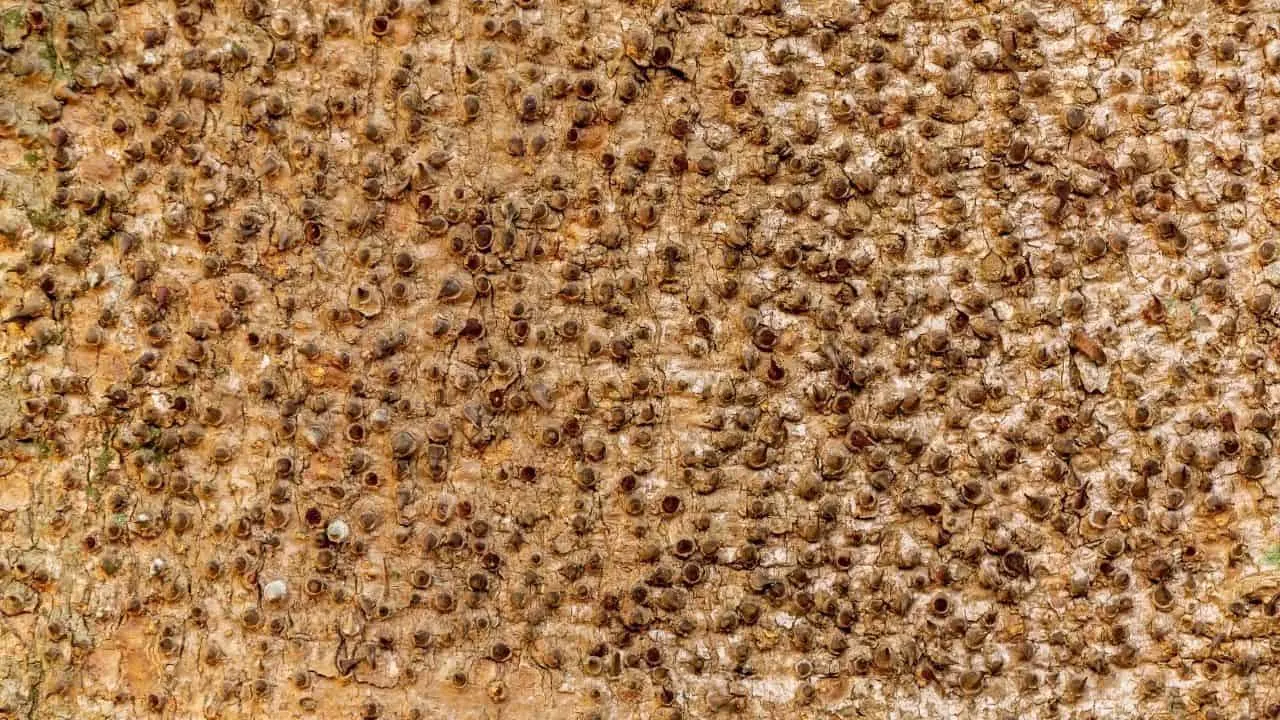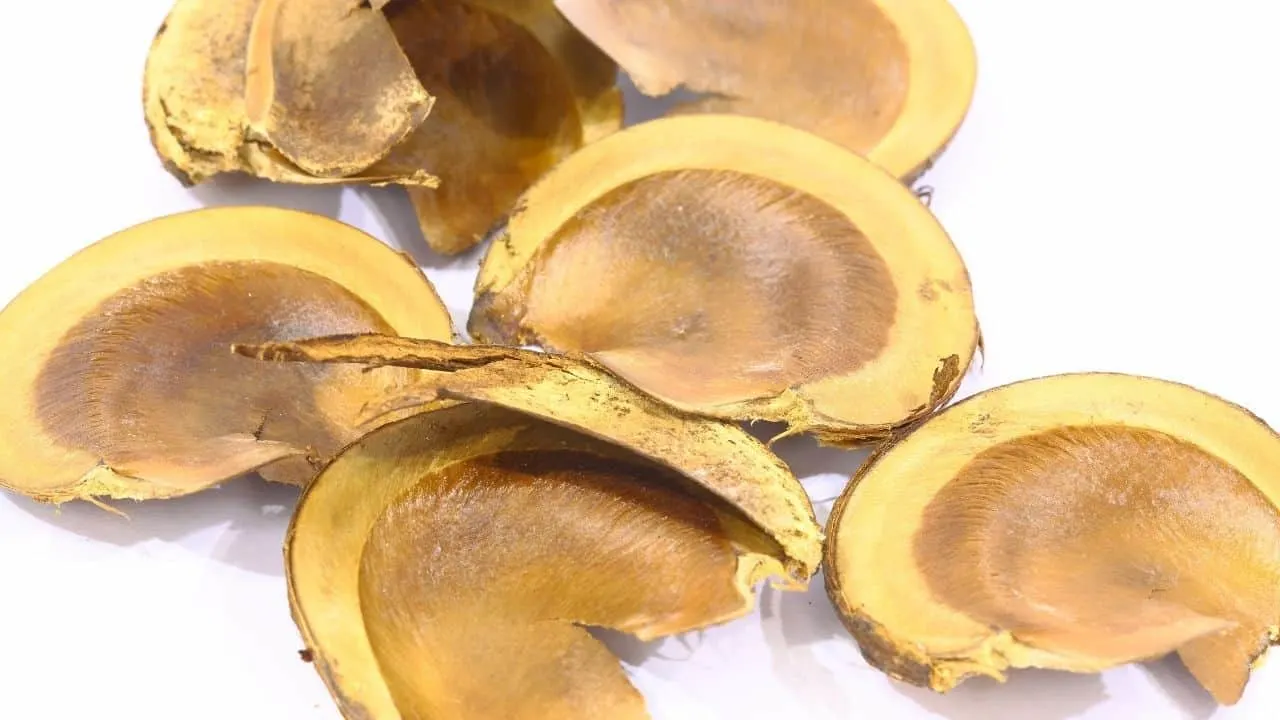Lethal spikes, poisonous leaves, exploding fruit. That doesn’t sound like a very friendly tree, does it?
In fact, this particular tree is so efficient at protecting itself and dispersing its own seeds, it’s a wonder it hasn’t overrun the whole world.
Table of Contents
What is this Spiky Tree in Northern Mississippi?
The spiky tree in northern Mississippi is Hura Crepitans. Most commonly known as the sandbox tree, this is the spiky tree in northern Mississippi. Hura Crepitans is part of the Euphorbia tree family and lives predominantly in the tropical rainforests of South and Central America.
Common Names
The Hura Crepitans has a few common names, depending on the region in which it’s found.
The most obtuse of these is ‘sandbox tree’, while possibly the most obvious is ‘monkey-no-climb tree’.

To understand where this fun name comes from, you just need to think about a monkey trying to climb up a trunk that is covered in wicked spikes.
This is definitely a case of ‘monkey – no climb!’ Hence, the name.
The name ‘sandbox tree’ comes from the time when people wrote with pen and ink. Before blotting paper was invented, very fine sand was used to absorb the excess ink from writing.
The fruits of the tree were cut across the top and used to hold the sand, just like a little sandbox. Hence, the name.
Description
The sandbox tree is a magnificent tree that is used to competing for the sun in its natural forest habitat, so it can grow very tall: over 100 feet (30 meters).
The trunk can have a diameter of up to 3.3 ft (1 m).
The spikes that cover the trunk of the sandbox tree are about one inch (2.5 cm) long and about 1.5 inches (4 cm) round at the base. They are usually quite close together but can grow so wide that they actually touch.
Compared to the scariness and toughness of the trunk, the leaves of the sandbox tree are quite friendly looking: rounded heart-shaped leaves up to 23 inches (60 cm) long.
There are female and male flowers on the tree, which means that it is self-pollinating.
The female flowers look something like a multi-legged starfish: round in shape, with about 15 ‘legs’. The color is orange-red.
The male flowers are long clusters of dark pinky-red clumps. They taper to a point.
The fruits appear to be the most friendly, even cute parts of the tree. They are rounded, 1-2 inches (3-5 cms) high, and 2-3 inches (5-8 cms) in diameter, and they look like fat little pumpkins.
They may look cute, but their exterior hides what they are really like.
Habitat
Hura Crepitans (or the sandbox tree) naturally occur in tropical regions of South America, but it can also be found in some areas of northern America.
The tree needs a lot of water, but in the form of gentle rainfall spread through most of the year. It also grows naturally in humid conditions.

Mississippi has a warm, humid subtropical climate, which are the conditions that the sandbox tree grows in. This means you may come across one of these trees in northern Mississippi.
Dangers
The sandbox tree is not one to be trifled with. In fact, it is highly recommended to steer clear of it if possible and never to plant one in your garden.
The most obvious dangerous part of the tree is the spikes, which act as physical armor. Climbing the tree is practically impossible.
Even if there is a chance of trying to get anywhere up the tree, the spikes are likely to win the battle.
Then we have the bark and leaves, which contain poison that can be deadly.

The seeds are not dangerously poisonous, but they can cause an extremely upset stomach with diarrhea and vomiting.
The sap of the tree is quite toxic and can cause bad itching and a horrible rash on the skin. More importantly, it can cause blindness if it gets into the eyes.
All of that is nothing compared to the danger posed by one of the smallest parts of the sandbox tree: the seeds.
Seed Dispersal

The sandbox tree doesn’t use wind, water, or animals to disperse its seeds. It uses a method that has far more impact and makes sure that the seeds do leave the parent tree.
The method the sandbox tree uses is dispersal via explosion.
This is why the cute pumpkin fruits are possibly the most dangerous part. When the fruits dry out, they literally explode, sending the seeds flying.
The seeds themselves can fly up to 46 feet (14 meters) away from the tree at a speed of up to 150 m/h (242 km/h).
You can understand why it may be a really bad idea to be close to a sandbox tree when the fruits are dry and seed dispersal begins.
Uses
Although the sandbox tree is widely thought of as being a dangerous tree, it does have a few uses.
The wood is relatively soft and is quite useful for making furniture. Some literature indicates that the sap of the tree is used as a poison on the tips of arrows or spears for hunting.
Despite the potentially harmful effects of the parts of the tree, it also has medicinal uses.
The leaves can be crushed and used to reduce swelling or to relieve pain from rheumatism.
Conclusion
Hura Crepitans is a dangerous-looking tree, what with the horribly sharp spikes that cover the trunk.
When you find out that the bark, leaves, and sap can be poisonous, or not deadly, then you see yet another danger the tree holds.
Not once, though, would you think that it is the cute, pumpkin-like seeds may pose the greatest danger. Until one of them explodes, that is…

Daniel has been a plant enthusiast for over 20 years. He owns hundreds of houseplants and prepares for the chili growing seasons yearly with great anticipation. His favorite plants are plant species in the Araceae family, such as Monstera, Philodendron, and Anthurium. He also loves gardening and is growing hot peppers, tomatoes, and many more vegetables.


